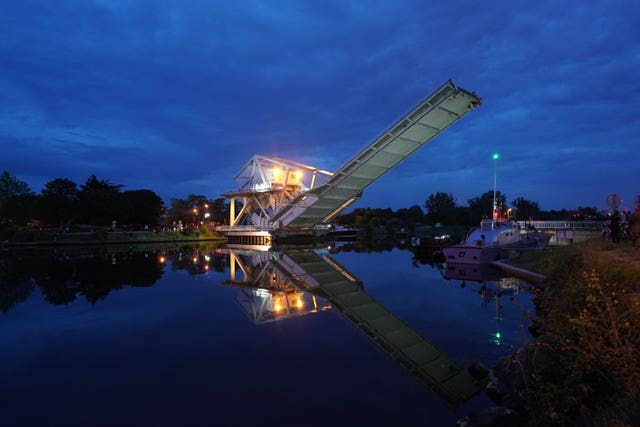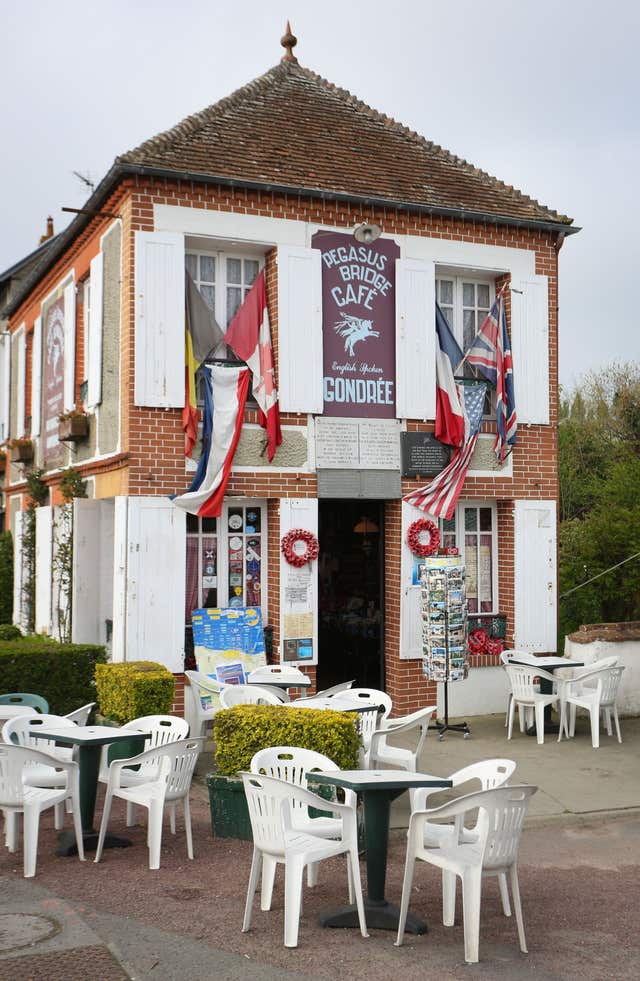
Serving soldiers paid tribute to the heroic efforts of their Second World War brothers in arms at a ceremony marking the first key battle of D-Day.
Shortly after midnight on June 6, 1944, soldiers landed next to bridges over the river and canal at Benouville, Normandy, France.
Capturing the two bridges, codenamed Ham and Jam, was a key part of the D-Day operation, as it hampered movement of enemy troops and enable the Allied forces to press forward from the beaches.
Dropping on French soil minutes into D-Day, parachutists and gliders from the Oxford and Buckinghamshire Light Infantry and the Glider Pilot Regiment joined the Royal Engineers, who were towed across the Channel in 28-men Horsa gliders, pulled by bombers, before gliding to their small landing area with pinpoint accuracy from 6,000 feet.
The bridges were captured after a battle lasting under 15 minutes in which two soldiers were killed and 14 wounded, including Herbert Denham ‘Den’ Brotheridge, who led the troops across and was the first British soldier killed in action in the Normandy campaign.
When mission commander Major John Howard transmitted the Ham and Jam code to signal their success it marked the first British objective to be achieved on D-Day.

Three-quarters of a century on, 130 soldiers from their successor units The Rifles and the Army Air Corps gathered at the bridge.
The Rifles held a ceremony at the Pegasus Bridge memorial to mark the moment the gliders landed, with a speech from Major Howard’s daughter Penny.
French politician Christophe Blanchet told the crowd: “This bridge was to allow the liberation of France, and with it the rest of Europe.”

A recording of Major Howard’s speech from a ceremony at the site 30 years ago was played before the Band and Bugles of The Rifles led their troops across the bridge.
Rifleman Peter Ramsden, of the Rifles 2nd Battalion, spoke of his pride in following in the footsteps of D-Day heroes.
The 23-year-old from Durham, and currently stationed in Lisburn, Northern Ireland, said: “It’s a massive honour to march across Pegasus Bridge.
“As one of our regiment’s most prestigious battle honours, it means a lot not only to the regiment but to the lads in the regiment as well.”

The officers and soldiers joined Arlette Gondree at for a Champagne toast at the cafe she owns next to the bridge, Cafe Gondree, in a tradition held since D-Day.
The cafe, where she lived with her family, was the first home in France to be liberated by the British and Ms Gondree’s father dug up champagne he had hidden in the garden from the Nazi occupiers, to toast the British troops who freed them.
Ms Gondree said: “There were 54 Germans in the village, fortunately they never found daddy’s hoard.
“But when the British soldiers dug out their trenches, my father asked them to dig it up.
“Thus the reason why the tradition of the Champagne is tied to the Gondree name, to this simple house, and this is what I do tonight to thank them all and to remember what they went through.”


Comments: Our rules
We want our comments to be a lively and valuable part of our community - a place where readers can debate and engage with the most important local issues. The ability to comment on our stories is a privilege, not a right, however, and that privilege may be withdrawn if it is abused or misused.
Please report any comments that break our rules.
Read the rules here